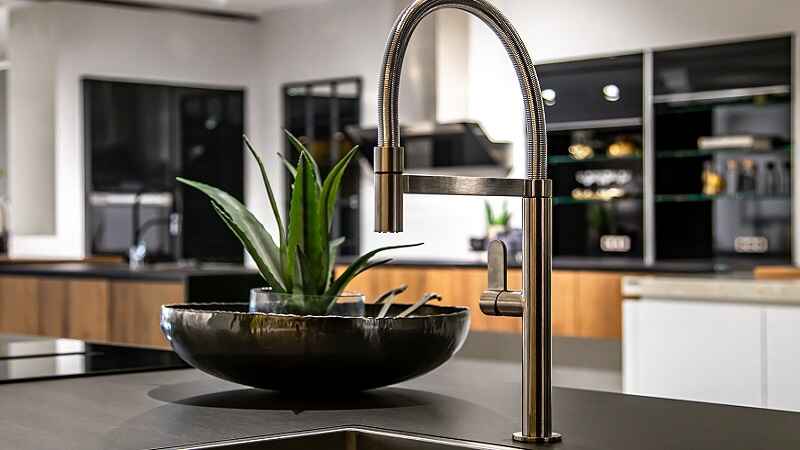Heating, ventilation, and air conditioning (HVAC) systems play a crucial role in maintaining indoor comfort. However, they also account for a large portion of a household’s energy consumption. Poor maintenance can lead to high electricity bills, frequent repairs, and decreased efficiency. Implementing the right HVAC maintenance strategies not only enhances system performance but also helps homeowners save money in the long run.
This guide explains the best HVAC maintenance strategies to boost energy efficiency, reduce costs, and extend your system’s lifespan.
1. Understanding the Importance of HVAC Maintenance
Proper HVAC maintenance is essential for ensuring your system operates efficiently and effectively. When neglected, HVAC systems work harder to heat or cool your home, consuming more energy and leading to higher utility bills. Routine maintenance helps identify potential issues before they turn into costly repairs.
Moreover, regular maintenance ensures better air quality, consistent indoor temperatures, and longer equipment life. It’s an investment that pays for itself through lower operational costs and increased comfort throughout the year.
2. Replace or Clean Air Filters Regularly
One of the simplest yet most effective HVAC maintenance strategies is to replace or clean your air filters regularly. Dirty filters restrict airflow, forcing your system to work harder to maintain the desired temperature. This extra strain increases energy consumption and shortens system life.
Tip:
- Check filters every 30–60 days.
- Replace disposable filters every 1–3 months.
- If you have reusable filters, wash and dry them thoroughly before reinstalling.
Clean filters not only enhance system efficiency but also improve indoor air quality by trapping dust, pollen, and allergens.
3. Schedule Professional HVAC Inspections Twice a Year
A professional inspection is one of the best ways to ensure your system is running efficiently. Most HVAC experts recommend scheduling a bi-annual maintenance check — once in the spring before cooling season and once in the fall before heating season.
During these inspections, technicians clean coils, check refrigerant levels, inspect ductwork, and calibrate thermostats. This preventive measure keeps your system in top shape, helps detect issues early, and ensures that all components work together efficiently.
4. Clean the Condenser and Evaporator Coils
Coils are vital components of any HVAC system. The evaporator coil absorbs heat inside your home, while the condenser coil releases it outside. Over time, these coils can accumulate dust, debris, and grime, reducing their ability to transfer heat efficiently.
Cleaning these coils once or twice a year improves heat exchange efficiency, enhances performance, and lowers energy use. Be sure to turn off power to the unit before cleaning and gently remove debris using a soft brush or vacuum. For deep cleaning, professional services are recommended.
5. Inspect and Seal Air Ducts
Leaky or poorly insulated air ducts can waste up to 30% of the air moving through your HVAC system. That means your system has to work harder to heat or cool your home, consuming more energy and increasing costs.
To fix this issue:
- Inspect duct joints and connections for visible gaps or holes.
- Use mastic sealant or metal tape (not duct tape) to seal leaks.
- Add insulation around ducts, especially those running through attics, basements, or crawl spaces.
Well-sealed ducts help distribute air evenly and improve your home’s overall comfort.
6. Optimize Thermostat Settings
A properly calibrated thermostat ensures that your HVAC system isn’t overworking. Installing a programmable or smart thermostat allows you to set temperature schedules that adjust automatically when you’re away or asleep.
For instance:
- In winter, set the temperature to 68°F (20°C) when at home and lower it when away.
- In summer, set it to 78°F (25°C) and increase slightly during absences.
This strategy can save you up to 10% annually on energy bills without compromising comfort.
7. Keep Outdoor Units Clear of Obstructions
The outdoor condenser unit needs sufficient airflow to operate efficiently. Overgrown plants, dirt, and debris can block airflow and cause the system to overheat.
To maintain efficiency:
- Keep at least 2 feet of clearance around the unit.
- Remove leaves, twigs, or grass clippings regularly.
- Clean the fan blades and housing area carefully.
This simple step helps your system perform better and reduces the risk of mechanical strain.
8. Check and Maintain Refrigerant Levels
Refrigerant is crucial for the cooling process. If your system is low on refrigerant or has a leak, it won’t cool efficiently, and your compressor could fail. This not only reduces performance but also increases energy usage.
Only a certified technician should handle refrigerant checks or refills. During professional maintenance visits, the technician will ensure the correct refrigerant charge and inspect for leaks, preventing long-term damage to your system.
9. Inspect Electrical Components and Connections
Faulty wiring or loose electrical connections can cause your HVAC system to malfunction or operate inefficiently. Regular inspection of electrical components helps prevent power surges, blown fuses, and safety hazards.
During maintenance, ensure all terminals, contactors, and capacitors are checked and tightened. This step enhances reliability, safety, and energy efficiency while minimizing the risk of costly breakdowns.
10. Lubricate Moving Parts
Your HVAC system has several moving components, such as motors, fans, and belts. Over time, friction can increase wear and tear, leading to inefficiency and mechanical failure. Lubricating these moving parts reduces friction and helps the system run smoothly.
Lubrication prevents overheating, extends the lifespan of the components, and ensures quieter operation. Always use the manufacturer-recommended lubricant for the best results.
11. Improve Home Insulation and Air Sealing
Even the most efficient HVAC system can struggle if your home is poorly insulated. Proper insulation reduces the workload on your HVAC system by keeping heated or cooled air inside.
Focus on insulating:
- Attics and basements
- Windows and doors (use weatherstripping and caulking)
- Walls and floors
Improving insulation and sealing air leaks reduces energy loss, helping your HVAC system maintain comfortable temperatures more efficiently.
12. Upgrade to Energy-Efficient Equipment
If your HVAC system is more than 10–15 years old, it may be time for an upgrade. Modern systems come with advanced energy-saving technologies like variable-speed motors, smart thermostats, and high-efficiency filters.
Look for systems with the ENERGY STAR® label, as they meet strict efficiency guidelines set by the U.S. Environmental Protection Agency. Though the upfront cost may be higher, these systems quickly pay for themselves through reduced energy bills and maintenance needs.
13. Keep Vents and Registers Clean and Open
Blocked vents and registers can restrict airflow, making your system work harder. Regularly vacuuming these areas and ensuring they remain unobstructed by furniture or curtains helps maintain efficient airflow throughout your home.
When airflow is balanced, your HVAC system can reach desired temperatures faster, improving comfort and energy efficiency.
14. Monitor Energy Usage
Tracking your energy usage helps you understand whether your maintenance efforts are effective. Compare your energy bills before and after implementing maintenance strategies. Many smart thermostats and energy monitoring devices provide detailed data on energy consumption.
If you notice unusual spikes, it may indicate an issue with your HVAC system that needs attention. Monitoring ensures consistent efficiency and helps you spot inefficiencies early.
15. Schedule Seasonal Maintenance Reminders
Consistency is key to maintaining HVAC efficiency. Create a seasonal maintenance checklist and set reminders to perform tasks like filter replacement, coil cleaning, and thermostat calibration.
Many homeowners also sign up for annual maintenance plans offered by HVAC service companies. These plans often include priority service, discounted repairs, and automatic reminders — making it easier to keep your system in top shape.
16. Benefits of Regular HVAC Maintenance
Regular HVAC maintenance brings several long-term benefits, including:
- Lower energy bills due to optimized performance.
- Fewer breakdowns and unexpected repair costs.
- Improved indoor air quality with cleaner filters and ducts.
- Extended equipment lifespan, saving money on early replacements.
- Consistent comfort throughout every season.
These advantages make regular maintenance one of the most cost-effective home improvement investments you can make.
17. Common Mistakes to Avoid in HVAC Maintenance
Even with the best intentions, homeowners often make mistakes that reduce efficiency. Avoid these errors:
- Neglecting filter changes for months.
- Blocking vents with furniture or rugs.
- Ignoring strange noises or odors.
- Attempting DIY refrigerant repairs.
- Forgetting to schedule professional tune-ups.
Avoiding these mistakes keeps your system reliable and energy-efficient year-round.
18. The Future of Energy-Efficient HVAC Systems
The HVAC industry continues to evolve with innovations aimed at improving energy efficiency. New technologies like geothermal heat pumps, solar-assisted systems, and AI-controlled smart thermostats are revolutionizing home comfort.
These advancements allow homeowners to reduce their carbon footprint while saving more money. As energy efficiency standards rise, maintaining and upgrading your HVAC system will remain an essential part of sustainable living.
Conclusion
Investing in HVAC maintenance strategies to improve energy efficiency and save money is one of the smartest decisions a homeowner can make. From simple tasks like changing filters and cleaning coils to professional tune-ups and system upgrades, every step contributes to long-term savings and comfort.
By following these strategies consistently, you’ll not only lower your utility bills but also extend the life of your HVAC system — ensuring your home stays comfortable, efficient, and eco-friendly all year round More Read



